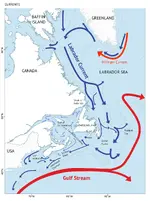It had been long assumed Eric meant grapes or grape vines for his calling it "Vinland". Literally "Land of Wine". But the Old Norse word for grape was "vinber" and grape vine was "vínviðr" (would sound like "vinviedr" - good luck).
So if he meant land of grapes or land of grapevines he, logically, would have called in "Vinberland" or "Vínviðrland" instead of "Vinland". Grapes are not really a Scandanavian thing, but any fruit makes wine. Apples, cherrys, raspberries and currents, gooseberrys, etc.
And who knows? The Shetland Islands (Norse for "Hilt Land") above Scotland was likely not named because hilts were found there. But, perhaps, because at that point the raiders grabbed their hilts. So Wine Land may have been named because it's time to break out the wine and celebrate if you survived that trip!




